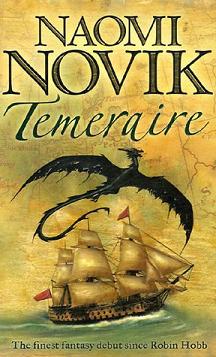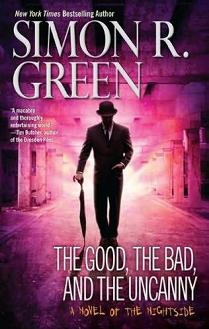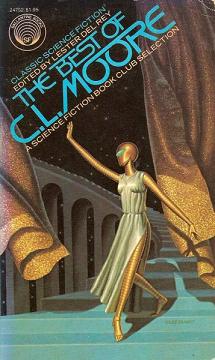
No Present Like Time
Steph Swainston
294 pages
published in 2005
I was quite taken by Steph Swainston’s debut novel, The Year of Our War, which I read from the library back in 2008. When I was looking over my bookshelves late last year to decide which books I was going to use for my Year of Reading Women project my eye fell on the omnibus edition of Swainston’s Castle series, of which The Year of Our War had been the first and I had the idea to save the second book, No Present Like Time for November as a treat. I knew I was going to like it which I wasn’t sure of with some of the other books I was going to read and I needed some incentive to keep me going.
Steph Swainston is one of the new breed of British science fiction and fantasy writers that rode to prominence under the ill fitting “New Weird” label in the first half of the noughties and one who got a lot of both commercial and critical succes. Unfortunately however she choose to stop writing to pursue her dream of becoming a chemistry teacher, which means that for the moment we’ll have to make do with the four novels she has written so far. A shame, as I quite liked both the novels of her i’ve read.
As said, No Present Like Time is the second novel in the Castle series, but this is not a proper fantasy trilogy and you can read this as a standalone; you’ll just miss a bit of context. It’s set a couple of years after the crisis of the first book, but moves into an entirely new direction. The Year of Our War had a fairly standard fantasy plot of the countries of the Fourlands being threatened by a unending horde of Insects which had already taken over the northern part of the Fourlands and which was only held in check by the powers of the immortal emperor San and his Circle of Immortal warriors only for political intrigue threatening their very existence. In No Present Like Time barely play a role, as a new, insect free island is discovered in the middle of the world ocean and the emperor sends out an expedition to persuade them to join his protection. Things quickly go wrong.
No Present Like Time starts with a duel, as one of the immortals of the Circle has been challenged by someone wanting to take his place. The Serein Gio, the greatest living swordsman has been in the Circle for hundreds of years and seen off challenge after challenge, but this time it’s different and his challenger takes his place: for the first time in centuries he starts to age. Most immortals replaced this way either slink off to die, or attempt to win back their places a year later, but Gio is a sore loser who leaves the Castle angrily to swear vengeance.
As in The Year of Our War, our hero and narrator is the emperor’s immortal messenger Jant, or “Comet”, the only winged human who can actually fly, as he’s a crossbreed of the winged Awia and the light boned and very fast mountain folk the Rhydanne — and he’s been damn careful nobody else like him is ever born. He’s also a drug addict, hooked to a drug called cat which if he takes to much of it transports him to the Shift, another world or dimension nobody else knows or believes in. He’s been clean for five years, but being ordered on the expedition to the newly discovered island of Tris, travelling for weeks over the ocean, frightens him so much he relapses.
The expedition is no success, as disastrous in its own right as in our world the Spanish discovery of the Aztecs was. Tris turns out to be an island paradise with gold common enough to be made into chamberpots and ruled democratically, with little difference in classes and a refined civilisation. The expedition having brought an insect along to demonstrate their danger, which promptly escapes and wreaks havoc. Which is the last straw for the senate and the expedition is sent home only to run straight into the rebellion set up by Gio….
Jant is who gives No Present Like Time its voice. Cynical, somewhat cowardly and inclined to mope about his love life, but on the whole with his heart in the right place, he may sound like another dozen fantasy anti heroes, but Swainston makes him believable and likeable in spite of or perhaps because of his flaws. What also helps to set the Fourlands apart is that while like in other series the technology and society is vaguely European and Medievaloid, it also has cigarettes, newspapers, t-shirts and professional football matches: it’s clearly not our Middle Ages. Swainston never tries to explain these incongruities; it’s just the way the Fourlands are and it works. In some ways her world building reminds me of China Miéville’s, only less gorey and incessantly baroque, though she comes close in the scenes set in the Shift, another element never fully explained or even understood by Jant, part hallucination but very real in its own terms.
Which is what I like about both The Year of Our War and No Present Like Time is the complexity of Swainston’s world building and effortless way it is presented to the reader. She never shows off and it always feels real, with new elements dropped in naturally. Her characters don’t know everything about their own world, may need time to understand the events they’re caught up in and most importantly, they rarely lecture the reader…



